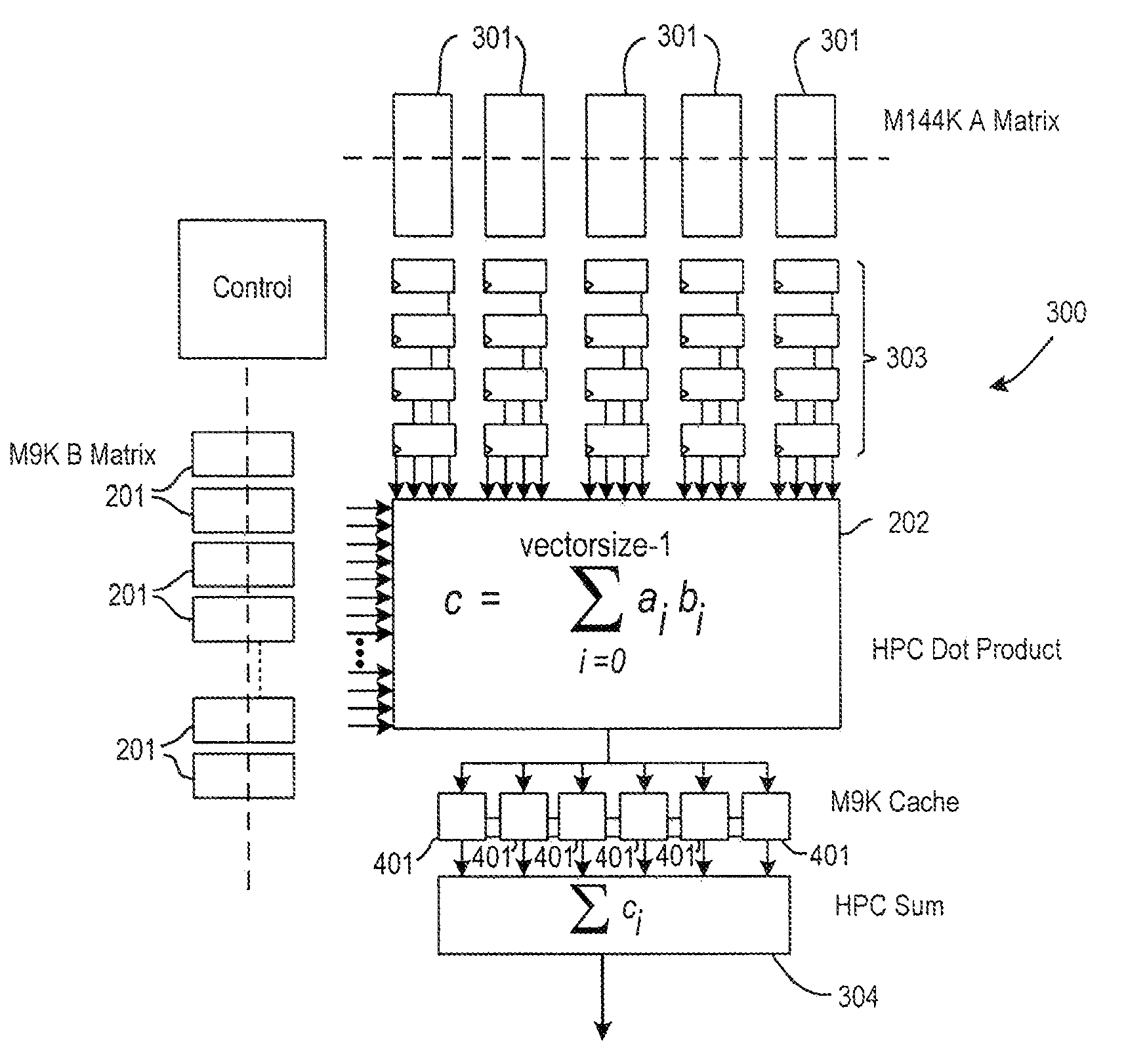Configuring a programmable integrated circuit device to perform matrix multiplication
a programmable integrated circuit and matrix multiplication technology, applied in the field of programmable integrated circuit devices to perform matrix multiplication, can solve the problems of increasing the number of clock cycles required to compute a single csub>ij /sub>calculation, reducing the effective bandwidth of the memory used, and increasing the number of clock cycles. to achieve the effect of reducing power consumption, reducing memory access, and increasing the effective bandwidth of the memory
- Summary
- Abstract
- Description
- Claims
- Application Information
AI Technical Summary
Benefits of technology
Problems solved by technology
Method used
Image
Examples
Embodiment Construction
[0022]A matrix multiplier according to the present invention for use in programmable integrated circuit devices (such as, e.g., FPGAs) uses dot product calculation circuitry which may be built from programmable logic of the programmable integrated circuit device, and can process arbitrarily-sized matrices by using blocking within a row or column—i.e., by dividing each row or column into row-blocks or column-blocks. The dot product calculation circuitry may be constructed using a monolithic block of multipliers and adders. For example, such circuitry can be efficiently designed with a floating point compiler such as that described in copending, commonly-assigned U.S. patent application Ser. No. 11 / 625,655, filed Jan. 22, 2007, which is hereby incorporated by reference herein in its entirety.
[0023]For the purposes of illustration one can consider dot product calculation circuitry that has 32 elements, and therefore can process 32 inputs from a matrix AA row and 32 inputs from a matrix...
PUM
 Login to View More
Login to View More Abstract
Description
Claims
Application Information
 Login to View More
Login to View More - R&D
- Intellectual Property
- Life Sciences
- Materials
- Tech Scout
- Unparalleled Data Quality
- Higher Quality Content
- 60% Fewer Hallucinations
Browse by: Latest US Patents, China's latest patents, Technical Efficacy Thesaurus, Application Domain, Technology Topic, Popular Technical Reports.
© 2025 PatSnap. All rights reserved.Legal|Privacy policy|Modern Slavery Act Transparency Statement|Sitemap|About US| Contact US: help@patsnap.com



